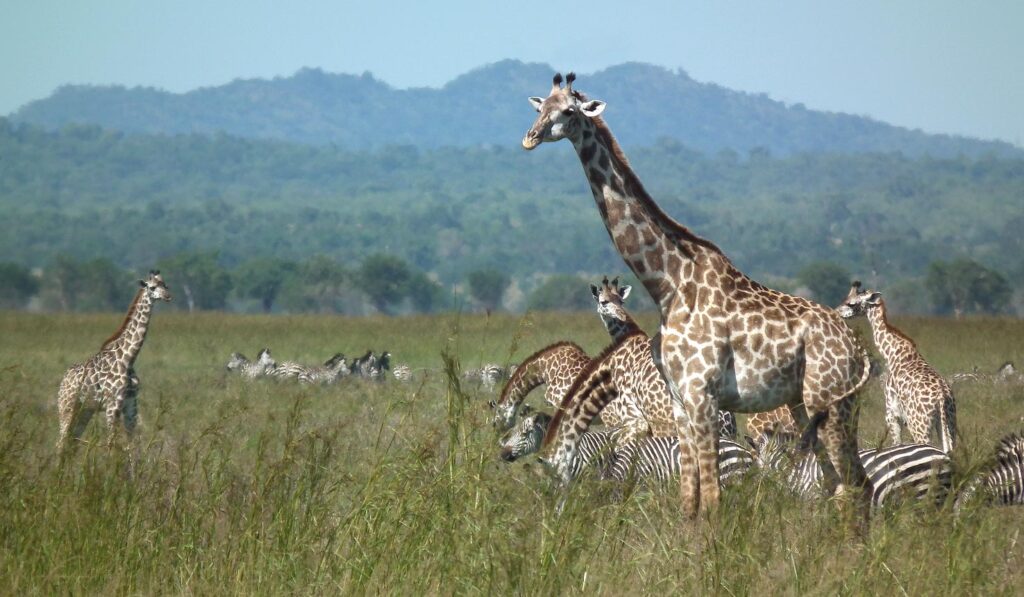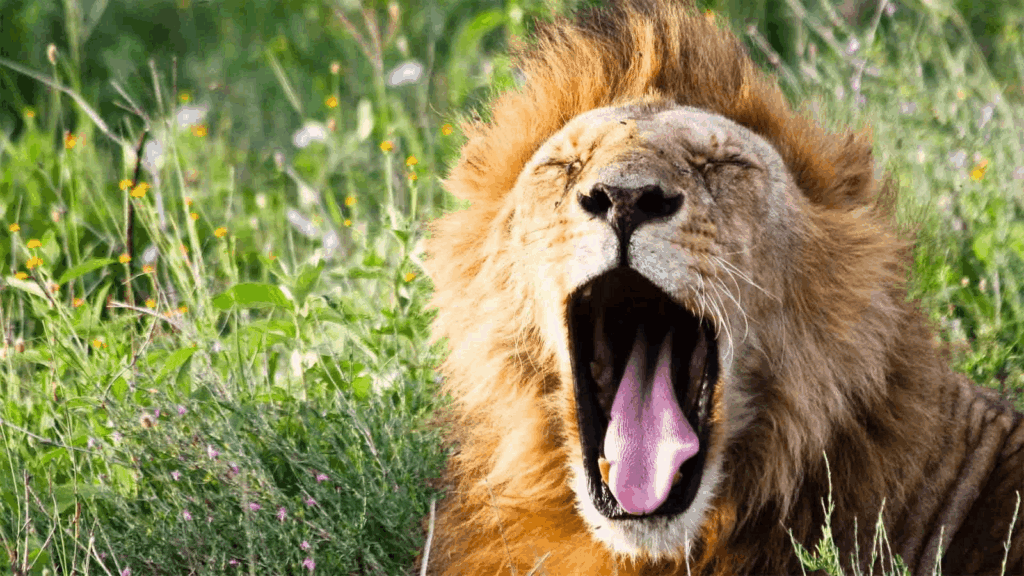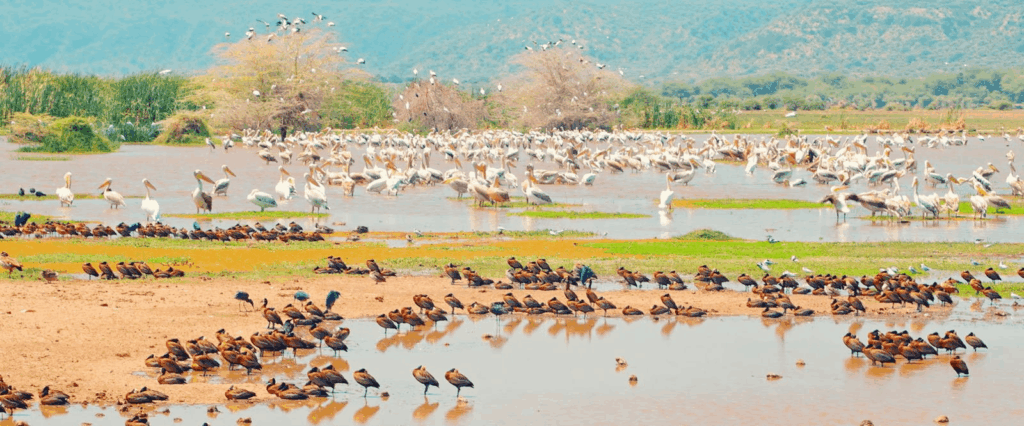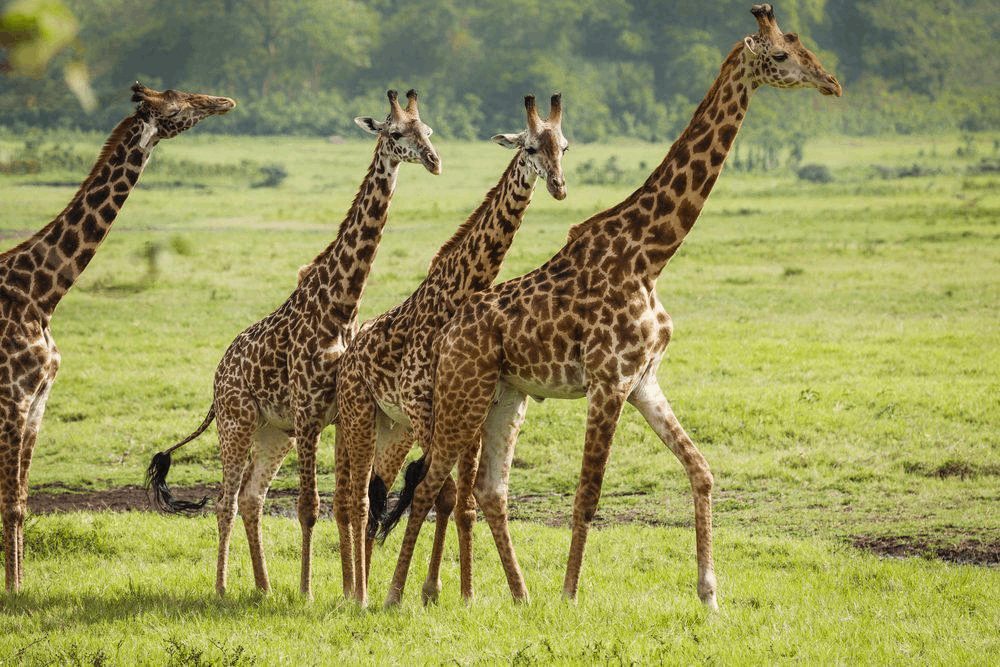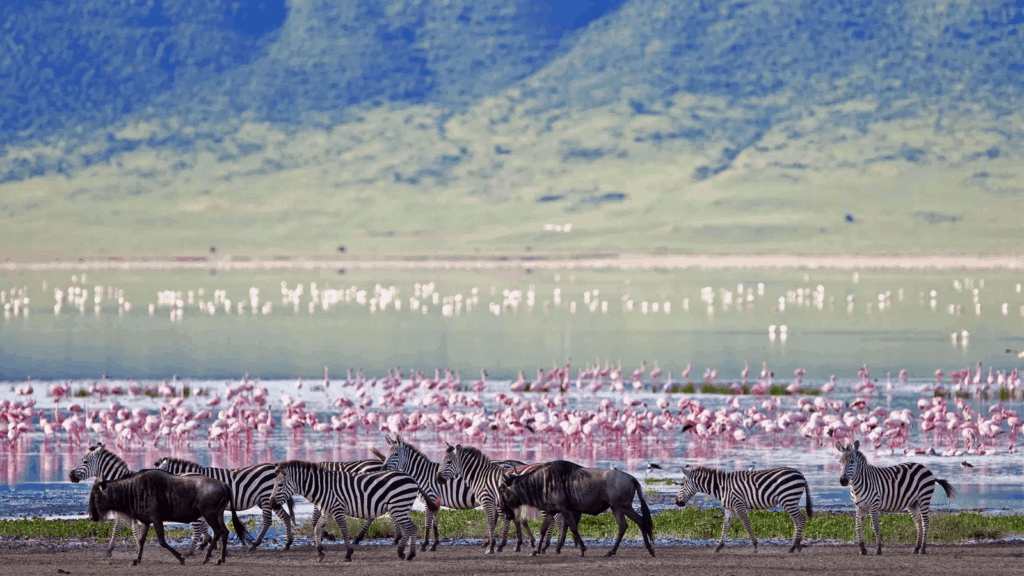Ruaha National Park is the second-largest national park in Tanzania, home to many wildlife species. Due to its low visitor numbers, a safari here feels secluded and exclusive. During the dry season, the savannahs are golden and dotted with baobab trees, while misty hills stretch across the horizon. The annual rains bring lush green grasslands and nudge the ancient baobabs to bloom.
Ruaha National Park became Tanzania’s second largest national park when it expanded its borders in 2008. Today, it holds 10% of the world’s lion population and Tanzania’s largest elephant population. The park’s landscape is made up of giant mountains that lead into vast grasslands, rocky outcrops, and a network of rivers. The largest of which, the Great Ruaha River, the park is named after. Visitors to the park are captivated by the lands red soil and legendary baobab trees as well as the large population of lions. Often prides of up to 25 lions are seen, sometimes attempting to take down a buffalo. Again, this park is relatively untouched by tourism but because of this, it is one of the best examples of how Africa has been for millenniums.
The park derives its name from the Great Ruaha River which flows through the south-eastern section of the park and attracts a broad range of wildlife.
Ruaha is an integral part of the Rungwa-Kizigo-Muhesi ecosystem. The ecosystem spans across an area of 45,000km², and it includes the Rungwa Game Reserve, the Kizigo and Muhesi Game Reserves, and the Mbomipa Wildlife Management Area. The Rungwa-Kizigo-Muhesi ecosystem fuses the best of Southern and East African nature.
When to visit Ruaha National Park
Like most other Tanzanian national parks, it is best to visit Ruaha National Park during the long dry season from June to October. It is relatively cool during this period compared to the hot dry season from mid-December to mid-March.
The dry season also provides great conditions for wildlife viewing because animals are drawn to the dwindling water sources and the grass is too short for them to hide.
For bird enthusiasts, the European winter months (December to April) are the best time to visit as migratory birds make their way down to Tanzania. Some lodges close in the long-wet season (March-May), so you will need to be flexible when you are finding your accommodation.
Wildlife at Ruaha
Ruaha has the largest concentration of elephants in East Africa with a population of around 10,000 of these gentle giants. Ruaha is also home to 10% of global lion populations.
You also have a chance of seeing leopards, cheetahs, zebras, elands, giraffes, impalas, bat-eared foxes, snakes, crocodiles, and jackals.
Ruaha’s unique position on the verge of Southern Africa means that it is home to species from Southern and Eastern Africa. The greater and lesser kudu can both be found at Ruaha. Whilst the greater kudu is traditionally found in Southern Africa, the lesser kudu is found in East Africa.
